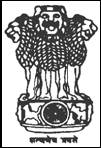
- Image via CrunchBase
In Barcamp Pune 5, I gave a presentation on why you should be on twitter. I also asked Ranjit Gadgil and Anupam Saraph to give a presentation on the Pune Governance wiki that they have been nurturing for the last 6 months. As a result of these presentations, various twitter related initiatives are getting started with respect to e-governance in Pune. Pravin Nirmal implemented a system where every ward page on the Pune Governance wiki shows the latest tweets related to that ward. (See for example, the bottom of the Aundh Ward page.) Pune Mirror also has a story on other such initiatives.
Last week, Anupam Saraph wrote this post on how everybody should “tweet for Pune”. We are reproducing it here:
Imagine you could SMS to everyone. Imagine you could let everyone know there is a traffic jam at the University circle. Imagine you could send out an invite to the tree-planting drive on the Baner Hill. Imagine you could message the world that admissions open for the educational course you have been waiting for. Imagine you message out reports of malaria in your neighborhood or choose to report births, deaths, suspicious activities, new shops, sale offers, rentals….
Imagine as a government agency you message out water closures. Imagine you message out flood alerts, road closures or diversions, bus, train and air departures or arrivals, waste collection notices, new project announcements, vip visits, dates of elections, urls of actionable sites…
That’s like a twitter of birds- hundreds of messages all at once…No wonder that these public messages sent on the internet are called tweets.
Of course you do not want to have thousands of tweets clogging up your life and that’s why tweeters like @pravinnirmal are enabling location specific tweets on pages at the governance wiki. See the tweets at the bottom of this page on the governance wiki. Give it a try. This way you can see the tweets sent by anyone on a location on a page devoted to that location. You can even go edit that page and add your two-cents worth.
You can also signup on tweeter and choose to follow tweeters like myself, Barack Obama or anyone else! By following a tweeter you can see all the tweets the person sends out. Others interested in your tweets may choose to follow you too.
With the White House tweets, the US senate floor tweets, the US house floor and even the US Supreme Courts on twitter tweeting away, should the rest of the world be behind?
Cities in the US have begun tweeting. Look at: San Marcos, Texas, Greensborocity, North Carolina, Killeen, Texas, Round Rock, Texas, McAllen, Texas, Plano, Texas. The Police in Austin, Texas, are using tweets for law and order advisories, notices and quick reassurances.
Can we have our ward officers, the Pune Police, the Pune RTO, the Pune Collector, the PMC, the PCMC, the Cantonment Boards, the MIDC, the PWD, the telecom companies in Pune, the Income Tax commissionerate, the Service tax commissionerate, the Pune University and even the businesses in Pune tweet?
All this is simple and free. Just sign into Twitter and start listening to the whole world- or talking too! Well not exactly the whole world, but to the whole world signed into twitter. If you are a government agency or a business in Pune you may qualify for some help and customization to get your tweets increasing your impact and effectiveness. Just email cio.pune@gmail.com to request your office to show the way to the rest of India.
About the Author – Anupam Saraph
Anupam Saraph is the CIO of Pune City. What that basically means is that
In January 2008, Pune Municipal Corporation (PMC) and Software Exporter’s Association of Pune (SEAP) announced the appointment of Dr. Anupam Saraph as the “CIO of Pune”. Dr. Saraph’s appointment has been made with the objective of providing expert guidance to various e-governance initiatives that are underway in Pune, to build a vision for Pune to transform into one of the most technologically advanced cities of the future.
Dr. Saraph has a Ph.D. in Informatics from the Rijksuniversiteit Groningen University in Netherlands, and is a co-founder of a think-tank and a management consultancy. You can follow him on twitter, his blog, and soon on the under-construction site ciopune.in.
![Reblog this post [with Zemanta]](http://img.zemanta.com/reblog_b.png?x-id=82745d0d-e75b-41f7-9ba8-2140006c5c62)


![Reblog this post [with Zemanta]](http://img.zemanta.com/reblog_b.png?x-id=58573c8e-e5b8-4ca0-9d61-521aafb09214)


